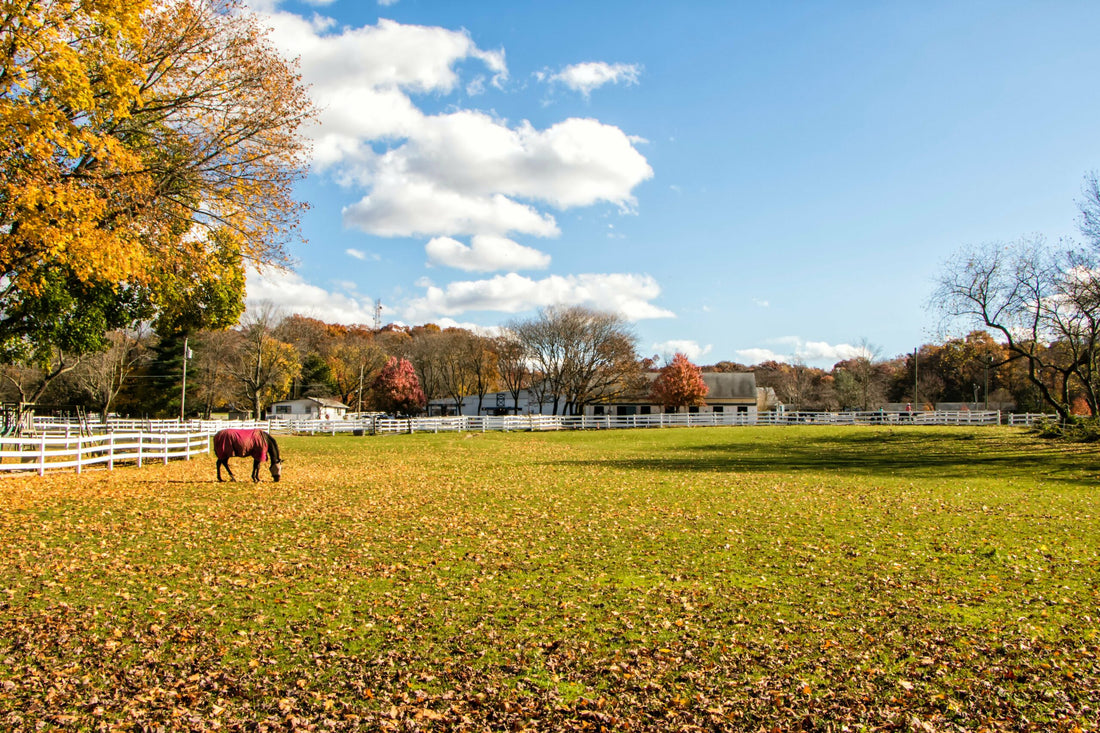
The Equestrian's Guide To Outerwear
Michelle DrumLet’s face it… riding in the colder months is not that enjoyable at times. Between the wet and the cold, and the snow, and the wind… need I go on? But after riding through many winters both up north and here in the south east, I’ve found the secret to surviving these somewhat dreaded months! (Ship to Florida, yeah right, I wish! Let’s add hit the lottery while we’re at it) But seriously it all comes down to proper clothing.
We’ve put together an equestrian’s outerwear guide to help you get through the coldest part of the year as comfortably as possible.
The Three Layer Principle
The first step to any cold weather outdoor activity is to understand “The Layering Theory”. If you’ve ever met anyone who is a serious hiker or backpacker, they will be the first one to tell you it’s all about layering! The Three Layer Principle consists of layering three garments each with a different purpose, so that you can add or remove layers depending on the weather and your level of outdoor activity. Makes sense right? – Hold on a minute, we aren’t talking about layering a sweater, a sweatshirt and a hoody together. Read on to learn the fine details of layering.

Layer 1: Base Layer
The first layer to concern yourself with is a good base layer! The premise behind them is to wick moisture away from the skin, which in turn enables your skin to stay dry and help retain warmth. Base layers come in a multitude of materials and styles to best suit your needs. The most common materials are either thermal polyester or merino wool- both have excellent wicking capabilities.
The style of the shirt is totally up to you. V-neck or crew neck t-shirts and ¼ zips tops are the most popular. The important aspect to consider is the proper fit. Base Layers should be fairly snug to wick the moisture away properly. I tend to gravitate towards ¼ zips because they help cut the chill on my neck… and gives it that extra “classy” element of still having a collar.
Some of our year in and year out favorite base layers tops include the Vestrum Lesa Show Shirt, yes it says show shirt, but in all fairness, the micro fleece lining on this shirt a top secret gem you need to know about! Other favorites include the Kerrits Up Tempo Fleece Tech Top fun colors and prints that layer well under sweaters or vests.
Winter breeches and tights are also considered base layers! These pants are a tad thicker than classic riding pants and are often fleece lined and sometimes offer wind protection. The wind resistance is key for me, and bonus points if the outer shell sheds barn debris like shavings and hay! Not having the wind tear right through your lower half makes a big difference. On those wicked cold blustery days, Where the temps are below freezing with the wind chill, you can layer these under jeans, and get real old school by layering your full chaps over top of your jeans. Yes, it’s a tad bulky but when it’s THAT cold, a horse girl’s gotta do what a horse girl’s gotta do to get the horses taken care of. One of our favorite Fall tights is the Kerrits Thermo Tech Full Leg Tight and moving on into winter, the Kerrits Power Stretch Fleece Lined Riding Tights are absolutely the way to go!
Learn more: 6 Best Winter Riding Breeches
Layer 2: Mid-layer (Vests, Fleeces, Sweaters)
The second layer is called the mid-layer and is designed to insulate, move moisture further from the body, and regulate temperature. This middle layer is where you’re going to get most of your “warmth” from. Mid-layers can range from fleeces and sweatshirts to soft-shell jackets… and my personal favorite, vests!
I’ll admit it. I may have a slight obsession with vests! But they are ideal for Carolina Fall, Winters and Spring. Weather here is a bit unpredictable, the day can start cloudy and cold, and by midday, the sun is out and you’re peeling off layers. Then as the sun sets the chill creeps back in. Vests are fantastic at keeping your midsection toasty while still allowing mobility and good airflow through the arms! I like the Kerrits Transitions Fleece Vest because it has a smooth fleece outer shell. This layer is thin, but warm and lends itself to a variety of uses. When the coldest darkest days arrive, it’s perfect for layering under your coat.
If vests aren’t your thing, then I recommend throwing a sweater, hoody, or sweatshirt on as your next layer. This is where something fleece is an excellent choice; it’s fast-drying and great at retaining body heat. This year we love the Barbour Stavia Knit Sweater available in 2 colors it’s the perfect weight for working outside without the bulk of a jacket.

For most fall climates, you can stop at this layer! But when you enter into the more wintery months, a third layer is normally needed.
Layer 3: Outer Layer (Jackets)
The final layer or “outer layer” adds a bit of extra warmth but is mainly designed to protect you from the elements, like wind and water etc. This layer encompasses all jackets and their many purposes on its intended purpose. But the main principle behind them is to either block the wind or repel water, so your insulating layers stay dry. What jacket you choose depends on the weather!
Raincoats
If it’s not too cold but still wet, then you’re looking at a normal raincoat! Most traditional rain jackets are just a hard outer shell with no extra insulation. The sole purpose is to repel water! Make sure to pay attention to whether the coat is “waterproof” or “water-resistant”. Water-resistant refers to fabrics that repel a certain level of water but may absorb some of the moisture after a certain saturation. A water-resistant jacket should handle most light rainfalls, but not a heavy downpour. Waterproof, on the other hand, is the highest “water repellent” level and should withstand most major storms. Always a store favorite is the Ariat Packable H2O Jacket!

Light Jackets
A lighter weight jacket is great for those chillier days but it’s not so cold that you can’t feel your toes! Most of these jackets feature either a down or synthetic filling as well as being water-resistant in case of showers or snow. The Kerrits Dry Line Waterproof Jacket is a top pick for the soft lining and water and wind-resistant outer shell. Plus, the “split tail” design to allow greater comfort in and out of the saddle.
Heavy Jackets / Parkas
A good barn parka is a must-have investment for any climate! While I may not need mine that often here in the Carolinas, the days of being over-bundled in my childhood looking like Randy in “A Christmas Story” are never far from my mind.

Parkas are all about heavy-duty insulation and protection from the elements. Commonly featuring hoods, longer lengths, warm linings, and tough outer shells. We are most excited this season for the Goode Rider Elite Down Jacket. Perfect for keeping you extra toasty while still being extra cute!
Accessories
Don’t forget the accessories! A good hat, scarf, and pair of riding gloves are MUST-HAVES to finish out any fall or winter riding outfit. I like a good fleece headband compared to an actual hat because it allows a little extra airflow, and my head doesn’t get too sweaty. A heavier pair of gloves is also important; keeping your hands warm does make a big difference… plus no one wants frostbite! And my absolute favorite final piece is a good cozy scarf! Not only do they keep you warm, but they can turn any barn outfit from “YIKES” to “Okay maybe we look slightly put together.”
It may still be warm and sunny right now… but Winter is on its way! I, for one, absolutely LOVE Autumn, so am counting down the days to chilly mornings and crunchy leaves. Now that you know my secret on how to enjoy the colder months get ready to start looking forward to the leaves changing!
You might also like:






